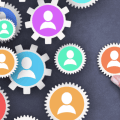You’ve probably heard a lot about Diversity, Equity, and Inclusion (DEI) lately – it’s become a pretty hot topic in the modern workforce. But DEI has actually been around for decades, starting with the civil rights movement in the United States in the 1960s. Back then, the focus was on eradicating discrimination based on things like race and gender. Today, DEI has evolved to include creating a work environment where everyone is treated fairly and has equal access to opportunities.
When we talk about DEI, we’re really talking about three things: diversity, inclusion, and equity. Diversity refers to the range of human differences, like race, ethnicity, gender, age, religion, sexual orientation, and socio-economic status. Inclusion is all about creating an environment where everyone feels welcome, respected, and valued – it’s about leveraging those differences to create a positive and productive work environment. And equity means making sure that everyone has equal access to opportunities, regardless of their background.
So why is DEI so important?
Well, for starters, companies with diverse and inclusive workforces tend to outperform those that don’t. A recent study by McKinsey & Company has shown that companies in the top quartile for ethnic and cultural diversity are 36% more likely to have above-average profitability than companies in the bottom quartile. Plus, diverse teams are more innovative, productive, and better able to solve complex problems. And let’s not forget that creating a truly diverse and inclusive workplace is just the right thing to do – it’s about treating everyone with respect and dignity.
But creating a truly diverse and inclusive workplace requires more than just good intentions. It requires an ongoing commitment to looking for new and innovative ways to keep up with a rapidly changing workforce.

how can today’s leaders cultivate a culture that prioritises DEI?
With some strategic planning, an open mind and the right initiatives in place every business has the ability to make progress towards a more diverse, equitable, and inclusive workplace.
If you are a regular reader, then you will be well versed in our 3 E’s framework to create a positive team culture. We believe to enjoy the benefits of a positive team culture you must first master the art of education, engagement, and environment.
Our 3’Es framework has been the cornerstone of creating positive team cultures for 29 years. By focusing on education, engagement, and environment, we’ve helped countless teams achieve thriving and successful cultures. However, we believe that this powerful framework is not just limited to promoting positive team cultures. In fact, we see the potential for it to revolutionise the way organisations approach DEI. By prioritising education on DEI, fostering engagement in DEI initiatives, and creating an environment that supports a culture of DEI, organisations can use this framework to tap into a wealth of perspectives, experiences, and talents that can drive innovation and success.
Lets dive in with our top tips:
Education
Education means providing opportunities for employees to learn about different cultures, identities, and perspectives. It means investing in training programs that teach skills like cultural competency, active listening, and conflict resolution. It also means creating a culture where learning is valued and curiosity is encouraged.
Training on unconscious bias
Offering training programs that help employees recognise and address their unconscious biases can help create a more inclusive workplace.
Diversity and inclusion workshops
Workshops focused on diversity, inclusion, and cultural competency can help employees learn about different perspectives and build empathy towards their colleagues.
Fish Philosophy Workshop
The Fish Philosophy is centred around four key practices: be present, choose your attitude, make their day, and play. By applying these practices to DEI, leaders can encourage employees to be present and engaged in conversations around diversity and inclusion, to choose a positive attitude and be open to different perspectives and experiences, to seek out ways to make all employees feel valued and included, and to have fun and enjoy the process of creating a more diverse and inclusive workplace.
Engagement:
A culture of engagement creates a positive environment where employees feel heard, recognised, appreciated, and valued. It involves promoting open communication, collaboration, and teamwork, while celebrating diversity and recognising the unique strengths that each individual brings to the table. When it comes to DEI, team engagement is crucial. It means involving your employees in your DEI initiatives and giving them a voice and platform to share their experiences and ideas.
Employee resource groups
Establish employee resource groups (ERGs) for underrepresented groups in the workplace, such as LGBTQ+ employees, women, and working parents group.
Team-building activities
Team building can promote DEI by bringing together individuals from diverse backgrounds and helping them to build relationships, trust, and respect for one another. When team members engage in activities that encourage collaboration and communication, they can gain a better understanding of each other’s perspectives and experiences.
Belbin team roles workshop
Belbin team roles can be a powerful tool for promoting a culture of diversity, equity, and inclusion (DEI) in the workplace by helping employees gain a better understanding of their unique strengths and weaknesses. By appreciating the diverse skills and perspectives that each team member brings to the table, teams can become more effective and productive. Additionally, by using the Belbin team role model to create diverse teams with complementary skill sets, organisations can promote equity by ensuring that each team member has an equal opportunity to contribute their talents to the group.
Environment:
Environment means creating a physical and emotional space that supports diversity and inclusion. It means creating a workplace that is accessible and accommodating to all employees, regardless of their needs. It also means promoting policies and practices that are equitable and fair, and that support the well-being of all employees.
Policy & procedure:
Review and revise company policies and practices to eliminate biases and ensure equal opportunities for all employees.
Diverse hiring practices
Conduct regular audits of recruitment, hiring, and promotion processes to identify and address any barriers to diversity and inclusion.
Inclusive language
Encouraging the use of inclusive language, such as gender-neutral pronouns, can help create a more welcoming and inclusive environment.
Diversity, equity, and inclusion (DEI) is not a passing trend or a mere buzzword. It is a fundamental aspect of creating a workplace that reflects the diverse world we live in and values the contributions of all individuals, regardless of their background, identity, or beliefs. DEI is about fostering a culture where every employee feels valued, included, and empowered to bring their whole selves to work. It’s about creating a workplace where individuals are respected for their unique perspectives and experiences, and where differences are celebrated as a source of strength and innovation. Ultimately, DEI is about creating a more equitable, just, and inclusive world for everyone.





Recent Comments